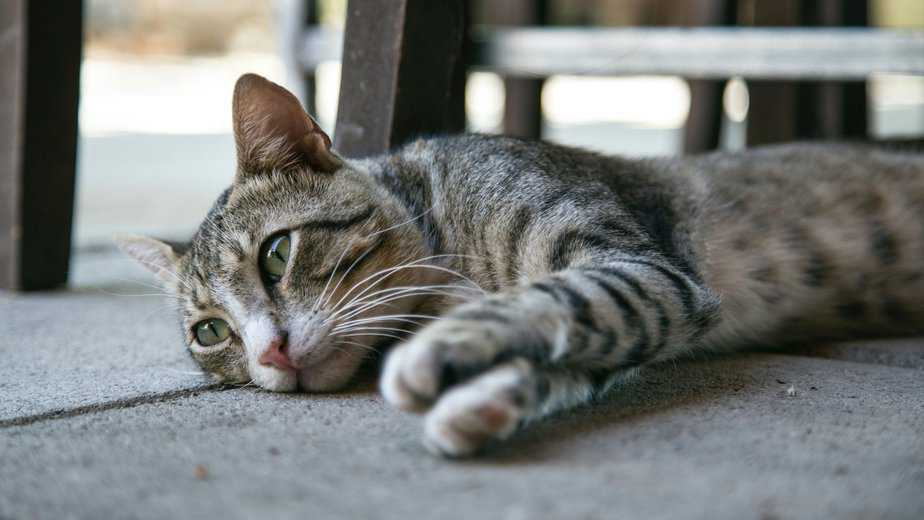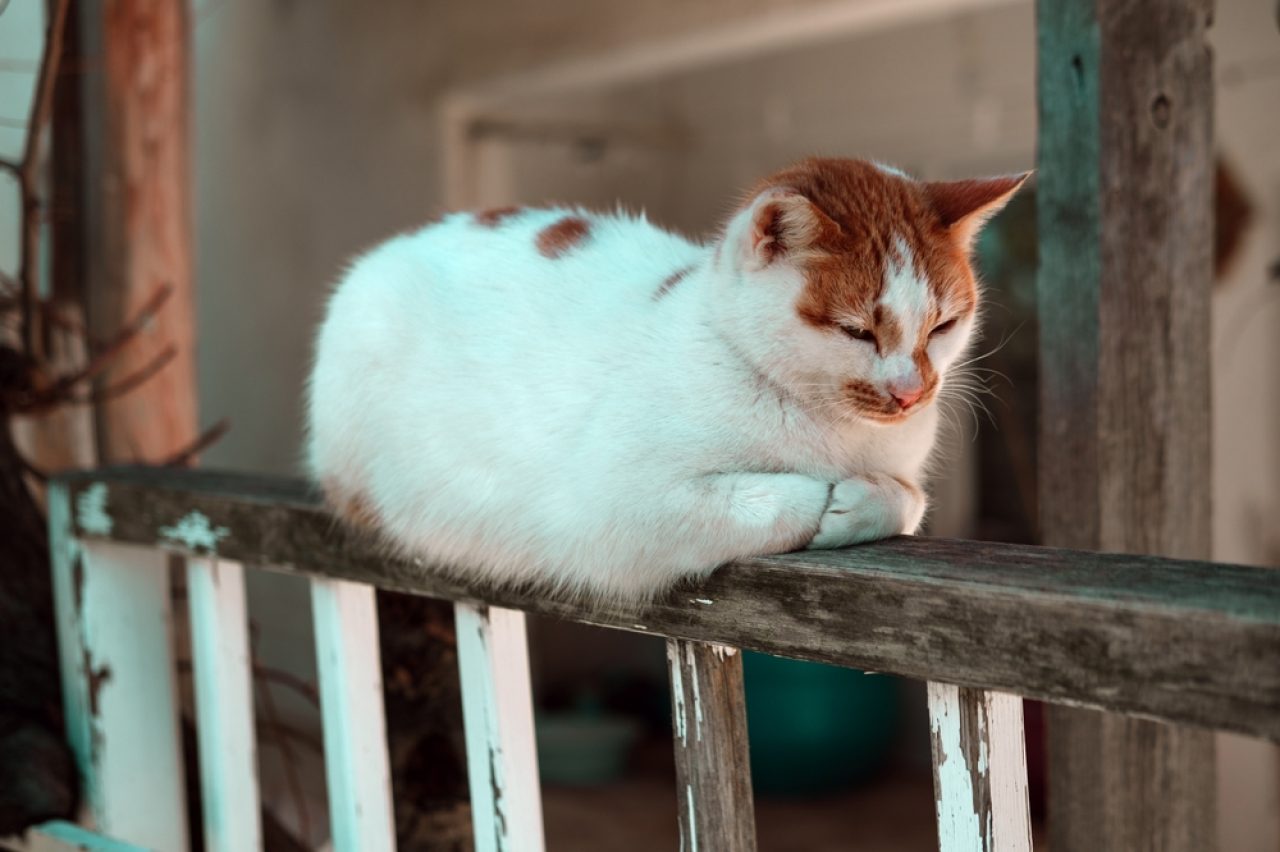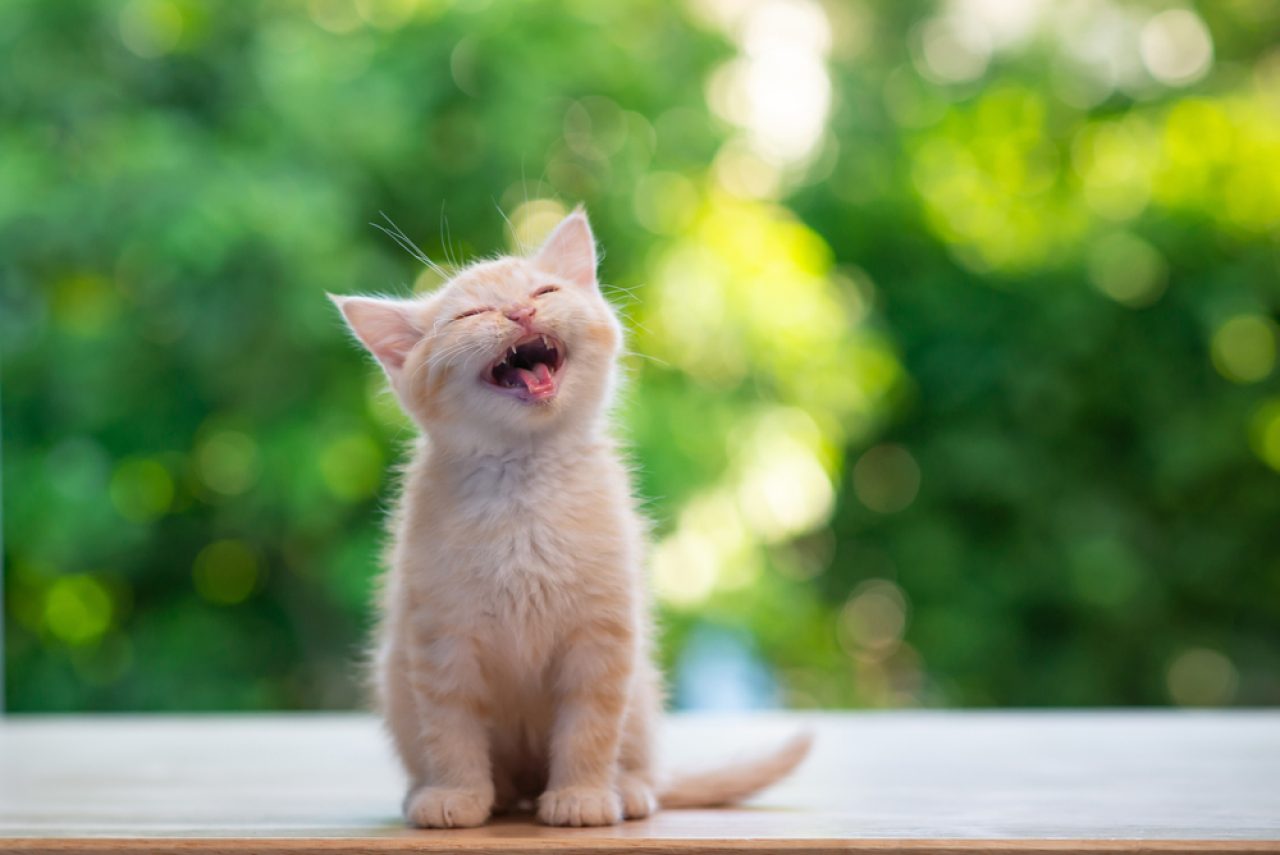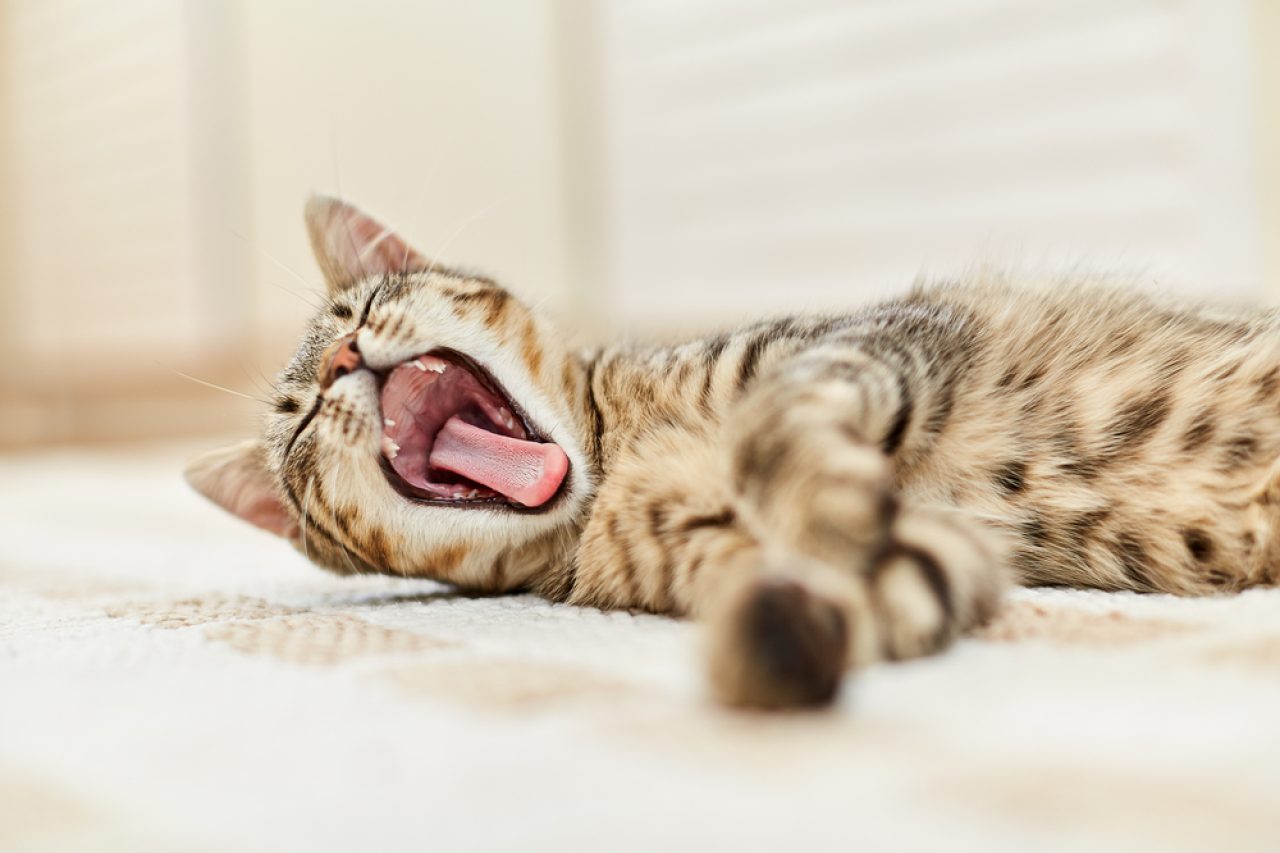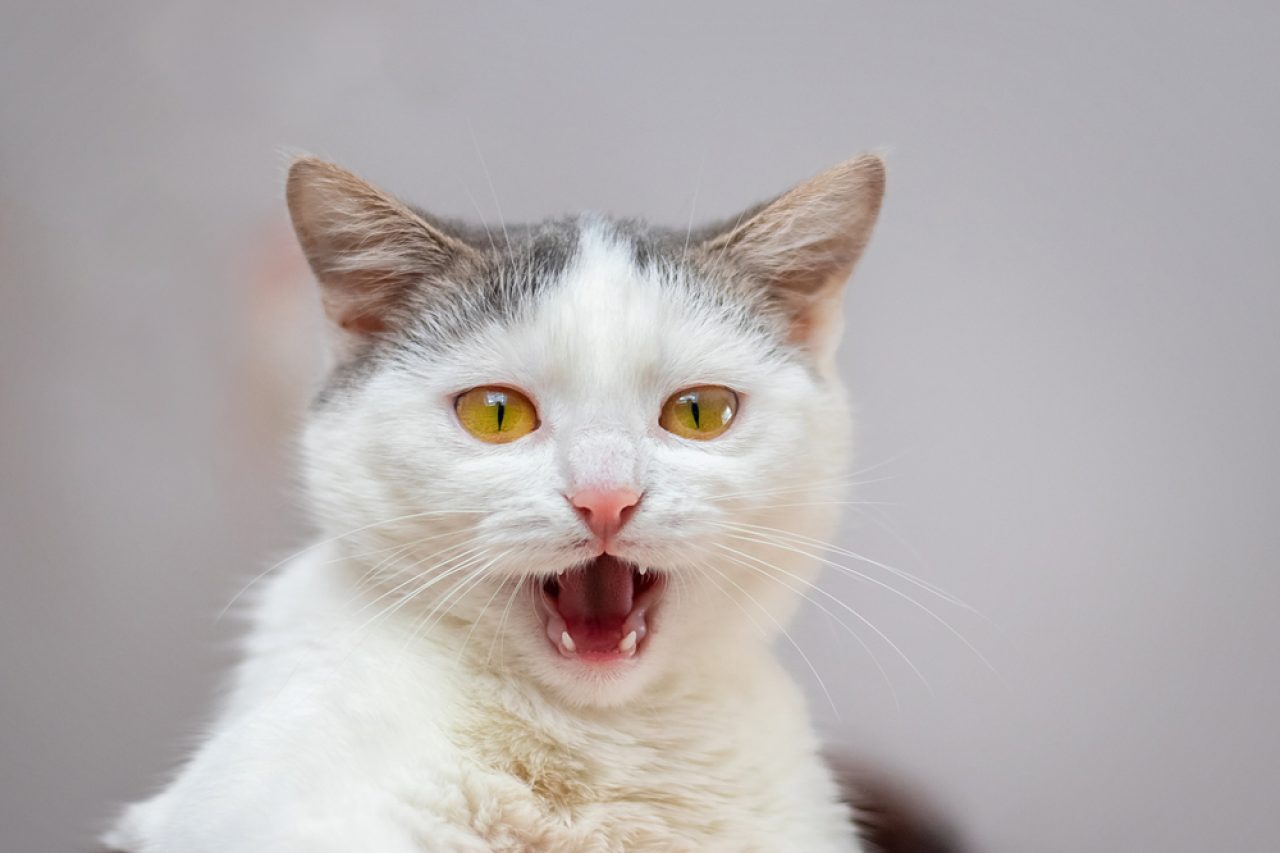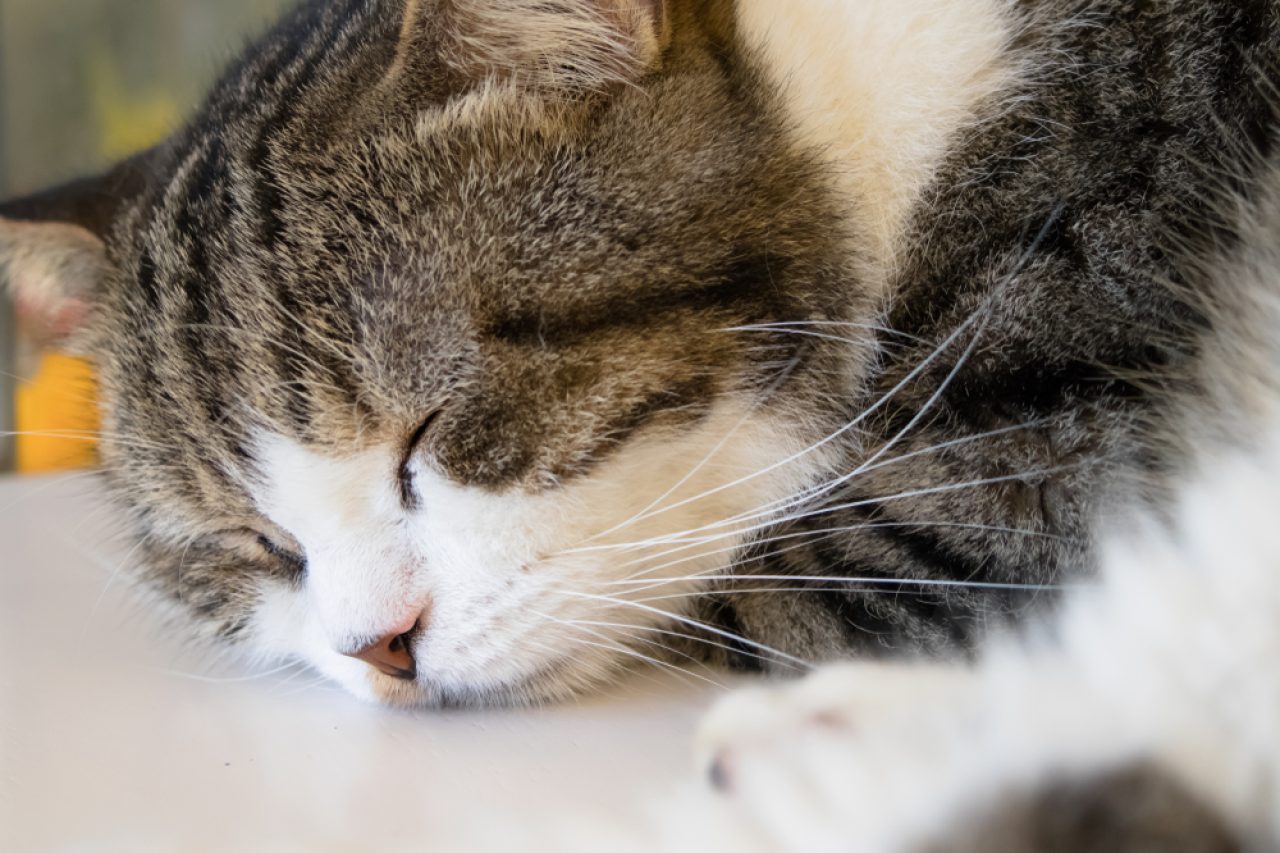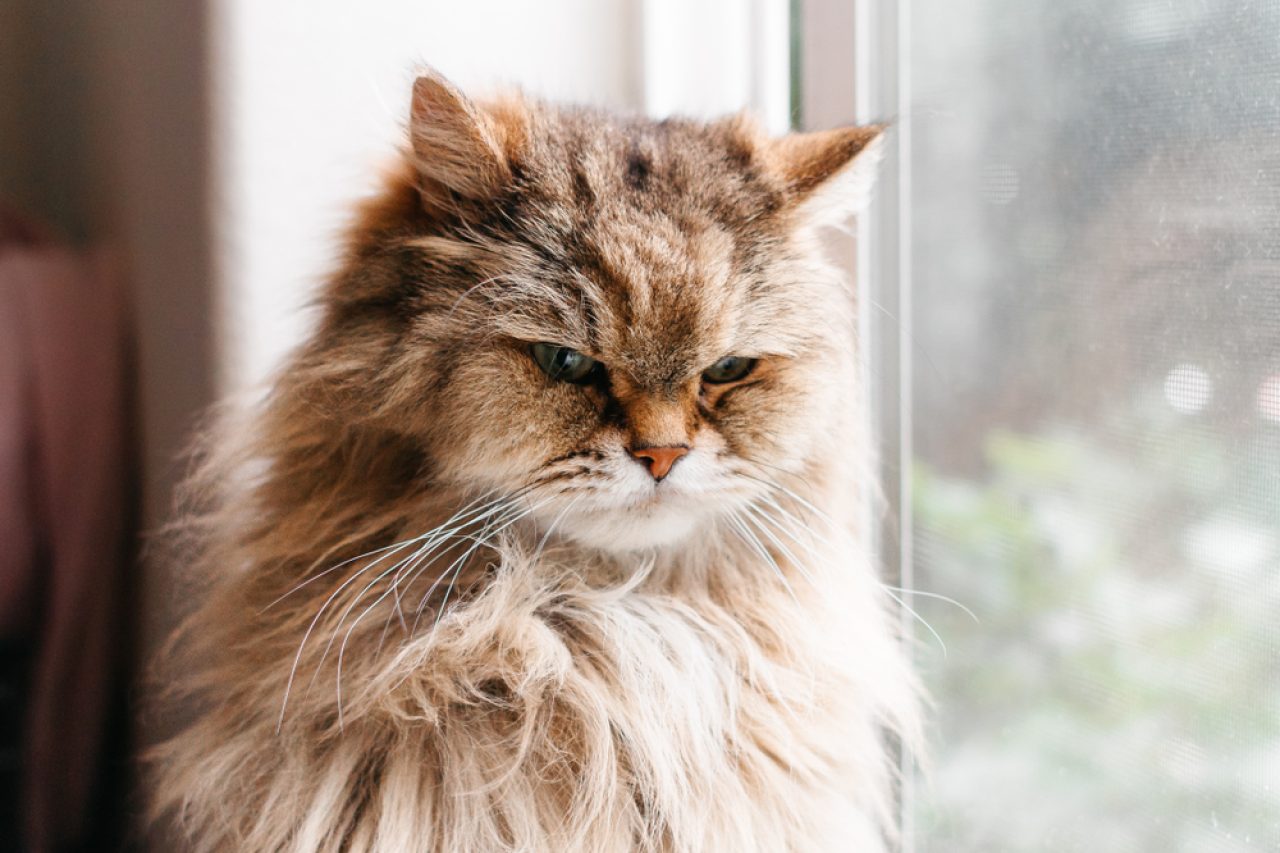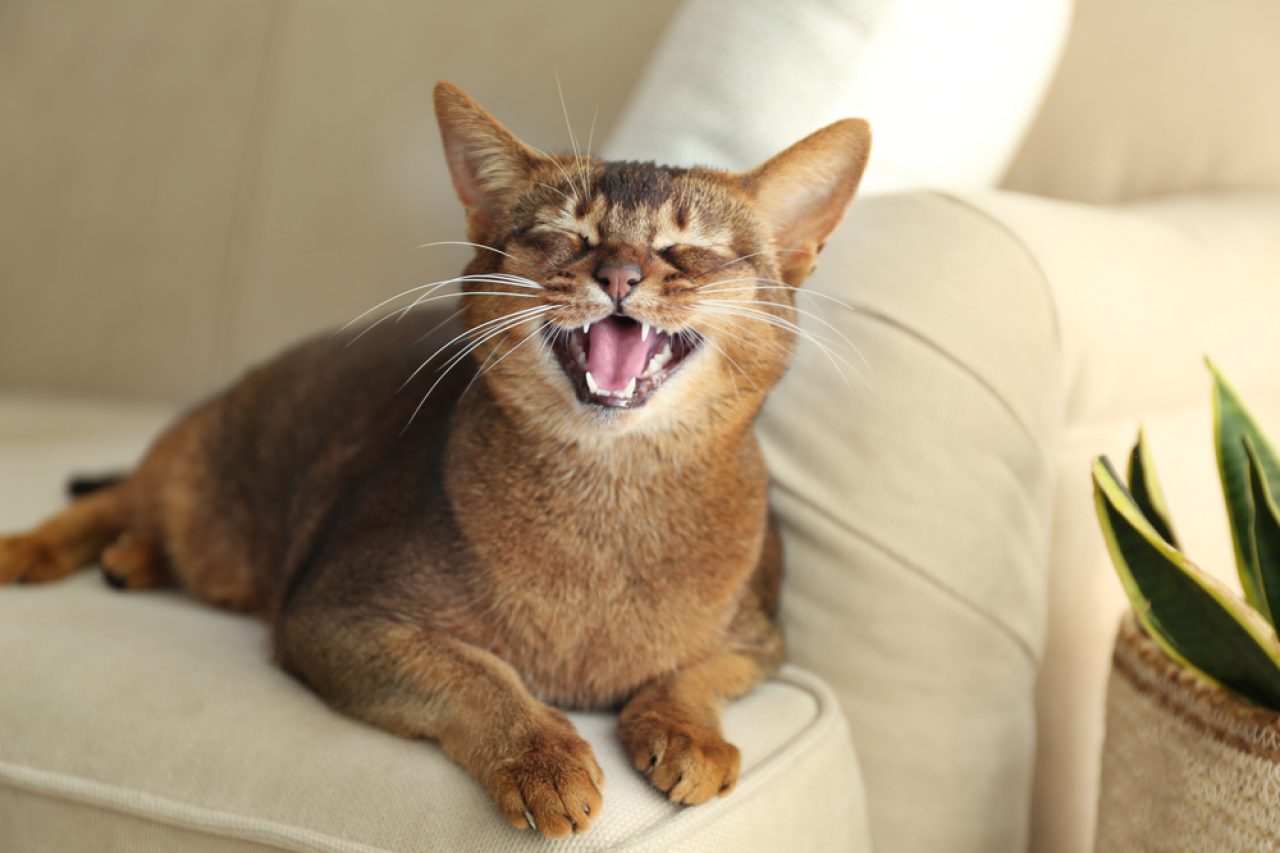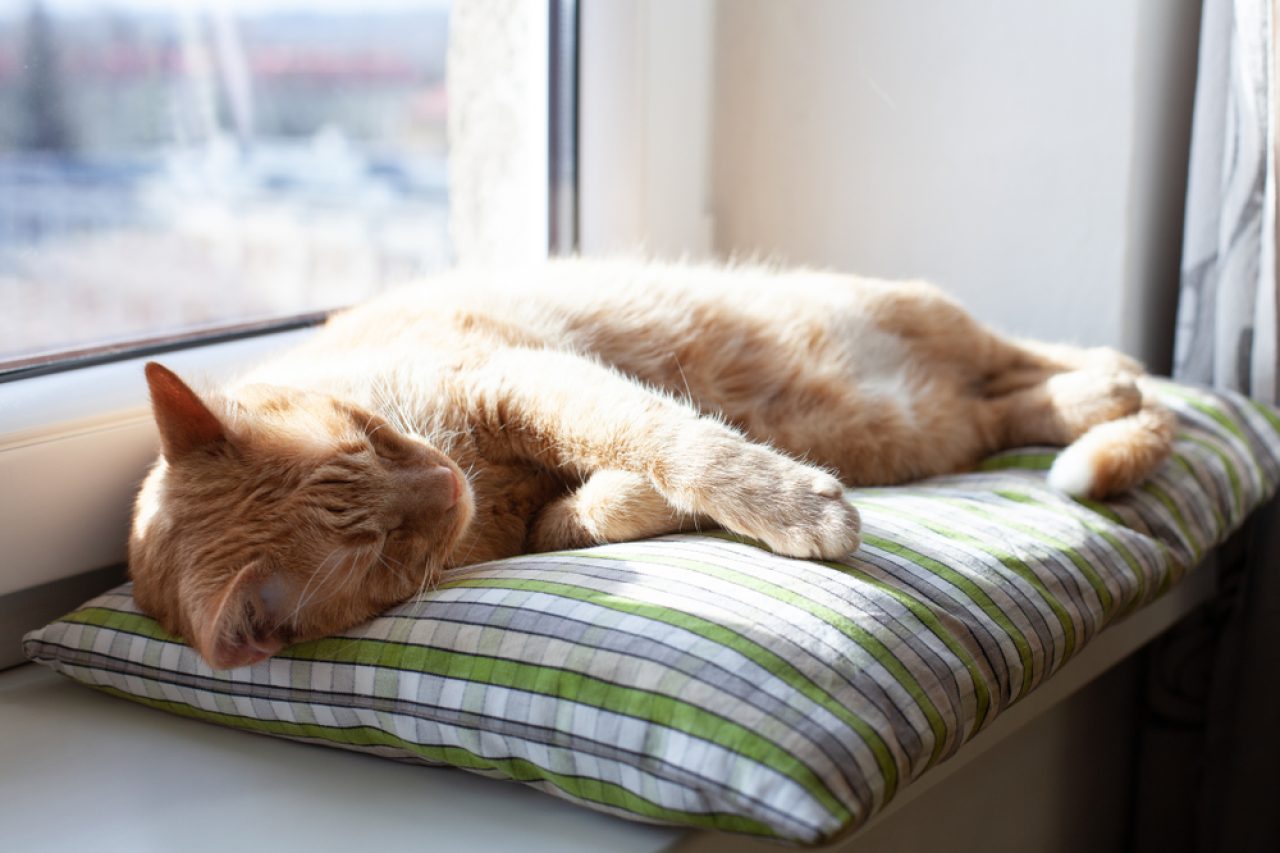📖 Table of Content:
You’re probably feeling very uneasy googling this. I’m guessing you are worried sick because you’ve noticed your cat’s vomit is pink. It’s perfectly normal to wonder, “What on earth is pink cat vomit a sign of, and should I worry or not?”
We already know kitties do a good deal of weird stuff, and it is hard to keep track of the weirdest ones. Sometimes, it’s so hard to understand the things they do, and as cat parents, we can never know for certain when to worry and when to just let them be – them.
However, pink vomit is something no one should take lightly!
You know, pink is such a lovely color for your cat’s collar to be in, food bowls, or favorite toys. She might even have a pink litter box, a pink bed mat, and a pink scratching post.
But to see her vomit in that color – that’s a big no-no. At least for me.
If you’ve recently noticed the color of your cat’s vomit is pink, fear not! I have taken on a mission of consulting as many experts as possible and thoroughly researching this topic, so you can have all the answers you need in just one place.
So buckle up, take your notes, and let’s see what the meaning behind pink vomit in cats is.
Do cats vomit often?
Most cats vomit from time to time, usually to get rid of something they ate that didn’t sit quite right with them. Or they have to get something out that’s bugging them in there, like a hairball.
Even the healthiest cat will vomit from time to time, and that’s nothing to worry about.
Yes, it’s not very pleasant to come near the smell and clean your cat’s vomit from the brand-new rug, but that’s the type of obligation you signed up for when you decided to get your little fluffball. An occasional vomit accident, some scratched sofas, and broken vases are your new life, my friend.
So, there’s no need to worry if your cat vomits here and there. You should keep an eye on her and notice how she behaves after vomiting. But typically, there’s no need to be concerned whatsoever.
However, if you noticed your cat’s vomit is pink, then simply taking a look at it might not be the way to go. On those occasions, you should be more concerned and consider an emergency vet visit. But more on that later.
What signifies pink cat vomit?
When a cat’s vomit is pink, everyone’s most common guess is that there’s blood present in the fluid. And that’s usually the right guess.
Although in some instances, pink vomit might indicate that the cat ingested some foreign object which released its color in her stomach, like colored yarn or even food coloring. But again, typically, it’s the sign of blood.
Sometimes, blood in cat vomit is hard to identify. If it’s not a large amount of bright red bloody fluid, you might not even notice it. Especially if you’re not paying that much attention, since a small amount of blood will look like a light pink streak along with mucus, water, and other regurgitated substances.
Whatever it may be, a large amount of red fluid or small streaks of pink, blood in your cat’s vomit could be a sign of some severe issues in their upper gastrointestinal tract.
Or, could even be due to some respiratory diseases or injuries which caused your cat to swallow and then vomit the blood.
Either way, it’s usually not a very enjoyable experience.
Why is your cat’s vomit pink?
There could be many reasons behind your cat’s pink vomit. As mentioned above, your cat could be vomiting blood due to either some serious medical issues or some accidental ingestion of non-edible and artificially colored things.
If it is the blood that’s causing such a weird and unusual vomit color, it appears pink because the redness of blood was diluted in water and other thrown-up substances.
But, without further ado, here are the 6 most common reasons to answer the question, “Why is your cat’s vomit pink?”
1. She has eaten a foreign object
Cats are famous for their desire to nibble everything. And I mean everything. You can be sure that everything they are playing with will eventually end up in their little mouths. And probably, bits of it would be eaten later as well.
Some cats take this eating habit to the next level and develop pica syndrome as a way of dealing with anxiety, for example.
Eating things that are not supposed to be eaten can cause your cat to feel nauseous and start vomiting. The accumulation of these inedible things in her digestive tract will cause it to clog, which can, among other things, result in regurgitation.
2. She might have swallowed some blood
Many things your cat gnaws on can be extremely sharp and damage the inside of her mouth or esophagus. Swallowing the blood from the injury can make her extremely nauseous and cause her to have a bloody vomit.
Also, the sharp object might manage to reach and damage her stomach or small intestines, too, which will also result in her vomiting blood.
But, the swallowing of blood might also be caused by a nose injury or some respiratory diseases.
Either way, the blood in your cat’s digestive system can have an exceptionally nauseating effect, thus inevitably resulting in the appearance of pink cat vomit.
3. Maybe she has some bacterial, viral, or fungal infections
Cats can be extremely susceptible to many gastrointestinal inflammations caused by bacterial or fungal infections.
One of them is feline panleukopenia (FP), a highly contagious cat disease caused by the feline parvovirus. Many cats can get infected by this disease, but kittens, sick cats, and unvaccinated cats are this virus’s first target.
Kittens can inherit this disease from their mother in the womb or be infected with it through their mother’s milk. Older cats can get infected by coming into close contact with a cat carrying the feline panleukopenia.
The virus spreads from a cat’s feces, urine, vomit, and saliva into the environment and can survive for a very long time.
Some symptoms of this disease are lethargy, depression, poor appetite, diarrhea, and vomiting blood.
Another one is salmonellosis, an infection found in cats caused by Salmonella bacteria. Along with causing gastroenteritis in cats (which is an inflammatory condition of the gastrointestinal tract), salmonellosis can be transmitted to humans.
Some symptoms of salmonellosis are fever, shock, weight loss, as well as vomiting blood.
There are also many other infections of the gastrointestinal tract that can damage its lining and result in bleeding, thus causing pink cat vomit. But the best thing to do would be to not guess which infection your cat might have but take her to the vet for him to determine.
4. She might be struggling with Inflammatory bowel disease (IBD)
Inflammatory bowel disease (IBD) in cats is an acute irritation and inflammation of the gastrointestinal tract. Inflammatory cells invade the walls of the gastrointestinal tract, disrupting its ability to digest food properly. This disease occurs most often with older cats.
Severe cases of this disease can cause significant damage to the lining of the gastrointestinal tract to the point when it starts bleeding. And as mentioned before, cats cannot stand blood in the digestive tract, so they have to get it out of their body in the form of pink vomit.
5. Maybe she experienced some shock
Cats are also very susceptible to shock, which can be a trigger to many other dangerous conditions.
Shock describes a condition when the brain is deprived of oxygen, causing the circulatory system to slow down. It can be caused by many factors like trauma, heat strokes, burns, severe allergic reactions, or infections.
Basically, anything that leads to low blood pressure and shock has the ability to damage the gastrointestinal tract and cause it to bleed. Therefore, resulting in cats vomiting pink fluids.
Some symptoms of shock in cats can be general disorientation, lethargy, depression, shortness of breath, diarrhea, and vomiting.
If your cat is going through shock, cover her with a blanket, don’t provide her with food or water at this stage, and make sure there’s nothing around her that will add up to her stress. It’s important to consult the vet in this case because shock in cats can have life-threatening consequences.
6. It could be because of cancer
This is a very sensitive topic since no cat parent wishes to think about it, let alone deal with this kind of situation.
Malignant cat cancers of the gastrointestinal tract can severely damage blood vessels. But also, other conditions, like mast cell tumors, can also lead to bleeding in the gastrointestinal tract. Resulting in bloody cat vomit.
Cancer diagnoses are always an emotional rollercoaster, but most of them are treatable and even curable if discovered in time. Cats are good at hiding illnesses, therefore they have to have regular vet visits.
Should you be immediately worried?
There’s no need to immediately panic when you notice pink cat vomit. But, you shouldn’t ignore it, also.
This is a very hard question since there is no way you can pay such close attention to your cat. Even if you quit your job, never do a chore in your house again, and dedicate your life to watching your kitty, there will still be at least a minute or two when you will have to leave her alone.
And a minute or two is enough for your kitty to misbehave in one way or the other.
But, this kind of life is pretty much unattainable. However, there are some tips and tricks you can learn to know your way around the next time you find yourself in a “pink cat vomit” situation.
You can call your cat’s vet for advice if:
- the vomiting is not frequent
- there are little traces of pinkish blood
- your cat appears to be fine
- your cat has so minor changes in stool
- your cat is generally healthy with no underlying issues
Take your cat to the vet immediately when:
- the vomiting is frequent
- your cat is weak and lethargic
- there are large amounts of bright red blood
- your cat has severe diarrhea
- your cat has a poor appetite
- your cat has some prior medical problems or is a “high risk,” meaning she’s either pregnant or a kitten
What to do when your cat throws up pink vomit?
Being sick is no easy peasy lemon squeezy. Especially not when you’re throwing up blood. Yikes!
Although your initial reaction might be to give food to your cat (since she just puked her last 3 meals), that actually is not an entirely good idea.
Think about it this way: What’s the thing you crave after you throw up? I’m sure it’s not a large meal, but rather a small snack and plenty of water.
Your cat actually needs the same things!
I’m bringing you 4 useful tips to learn how to manage your next pink vomit accident.
1. Clean it up!
First things first, you have to clean the puke. Cleaning and disinfecting the surface where your cat puked is beneficial to both you and your kitty.
Feline saliva contains allergens that are not good for human health. So, it is best to take care of the mess right away.
2. Rehydrate your kitty
Throwing up causes your kitty to lose a lot of body fluid. So, it’s important to rehydrate since dehydration can be very harmful and lead to other serious problems.
Encourage your cat to drink water while she’s recovering. If she usually refuses to drink it, try getting her a water fountain, since cats love moving water.
3. Give her small portions of food
As mentioned above, don’t opt for big food portions.
It would be best to avoid giving her a full meal for the entire day when she vomits, and just provide her with small snacks of boiled chicken, for example. Otherwise, she might throw up again.
4. Take her to the vet, of course
This is a no-brainer one, but yes: taking your cat to the vet is the safest option. You might be unsure of the severity of her condition, but the vet will know best.
Some cat parents have a habit of taking their cats once a month or two, which is a good habit to attain. That way, you don’t have to stress about many details since the vet would take care of everything.
Final thoughts
As we were able to see, pink cat vomit can happen due to many reasons. It can be something normal but also something to worry about.
It never ceases to amaze us how extraordinary our cats are! It’s fascinating how they know how to cure themselves if they’re dealing with a not-that-serious disease. They will literally vomit on purpose to clear their digestive tract. How amazing is that?!
So, if your cat occasionally vomits, you don’t have to worry about it. The thing you will have to worry about is the cleaning process.
However, you shouldn’t take it lightly if your cat frequently vomits and the vomit appears to be pink. Also, keep an eye on other symptoms, like if she is lethargic and seems depressed or if she refuses to eat and has trouble in the litter box.
Those are all signs of a potentially serious medical condition, and in that case, the best thing you should do is take your cat to the vet.
Unfortunately, there are so many dangerous diseases your cat can get. But, fortunately, many can be prevented and cured if treated the right way and in time.
Read more: 5 Safe Home Remedies For A Cat Vomiting White Foam
